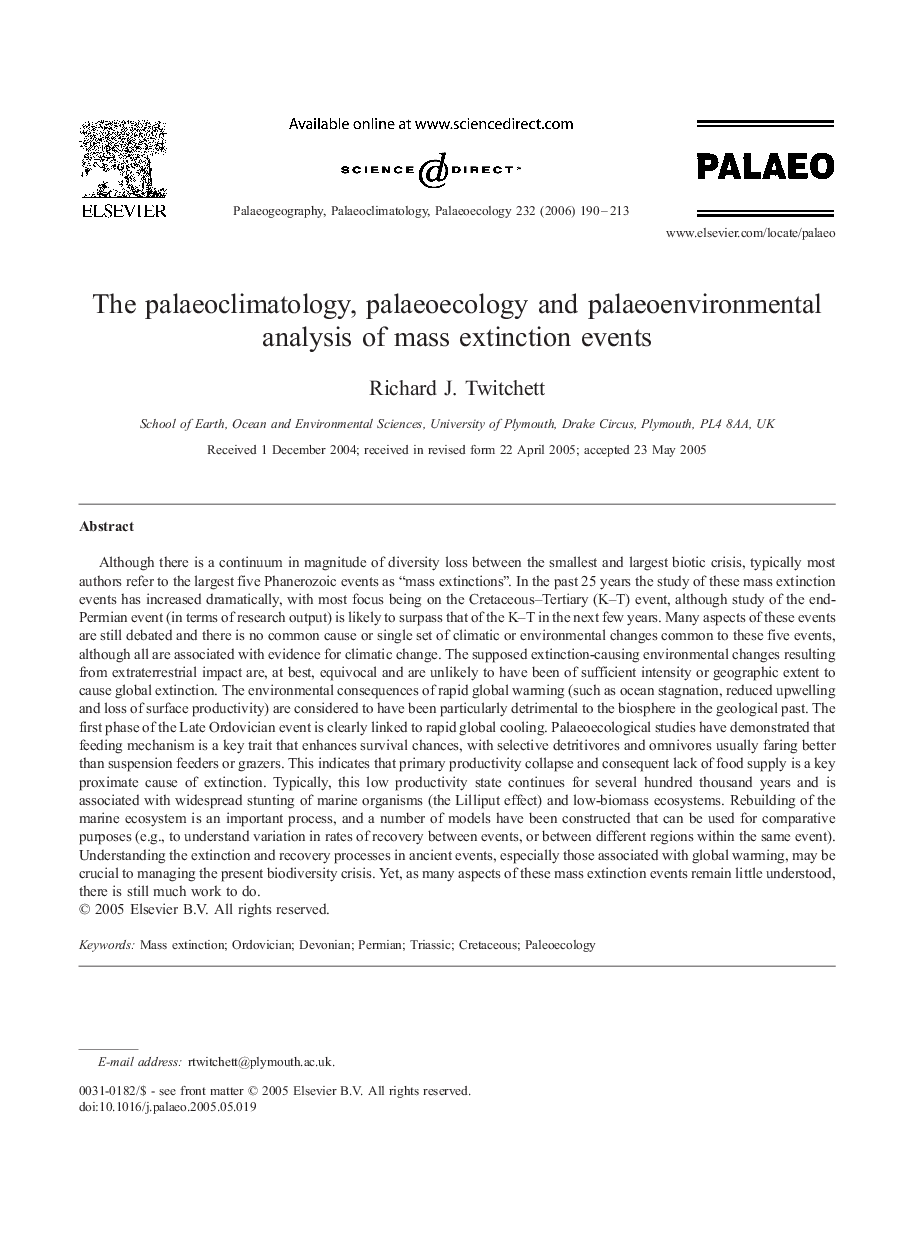| Article ID | Journal | Published Year | Pages | File Type |
|---|---|---|---|---|
| 4469601 | Palaeogeography, Palaeoclimatology, Palaeoecology | 2006 | 24 Pages |
Although there is a continuum in magnitude of diversity loss between the smallest and largest biotic crisis, typically most authors refer to the largest five Phanerozoic events as “mass extinctions”. In the past 25 years the study of these mass extinction events has increased dramatically, with most focus being on the Cretaceous–Tertiary (K–T) event, although study of the end-Permian event (in terms of research output) is likely to surpass that of the K–T in the next few years. Many aspects of these events are still debated and there is no common cause or single set of climatic or environmental changes common to these five events, although all are associated with evidence for climatic change. The supposed extinction-causing environmental changes resulting from extraterrestrial impact are, at best, equivocal and are unlikely to have been of sufficient intensity or geographic extent to cause global extinction. The environmental consequences of rapid global warming (such as ocean stagnation, reduced upwelling and loss of surface productivity) are considered to have been particularly detrimental to the biosphere in the geological past. The first phase of the Late Ordovician event is clearly linked to rapid global cooling. Palaeoecological studies have demonstrated that feeding mechanism is a key trait that enhances survival chances, with selective detritivores and omnivores usually faring better than suspension feeders or grazers. This indicates that primary productivity collapse and consequent lack of food supply is a key proximate cause of extinction. Typically, this low productivity state continues for several hundred thousand years and is associated with widespread stunting of marine organisms (the Lilliput effect) and low-biomass ecosystems. Rebuilding of the marine ecosystem is an important process, and a number of models have been constructed that can be used for comparative purposes (e.g., to understand variation in rates of recovery between events, or between different regions within the same event). Understanding the extinction and recovery processes in ancient events, especially those associated with global warming, may be crucial to managing the present biodiversity crisis. Yet, as many aspects of these mass extinction events remain little understood, there is still much work to do.
